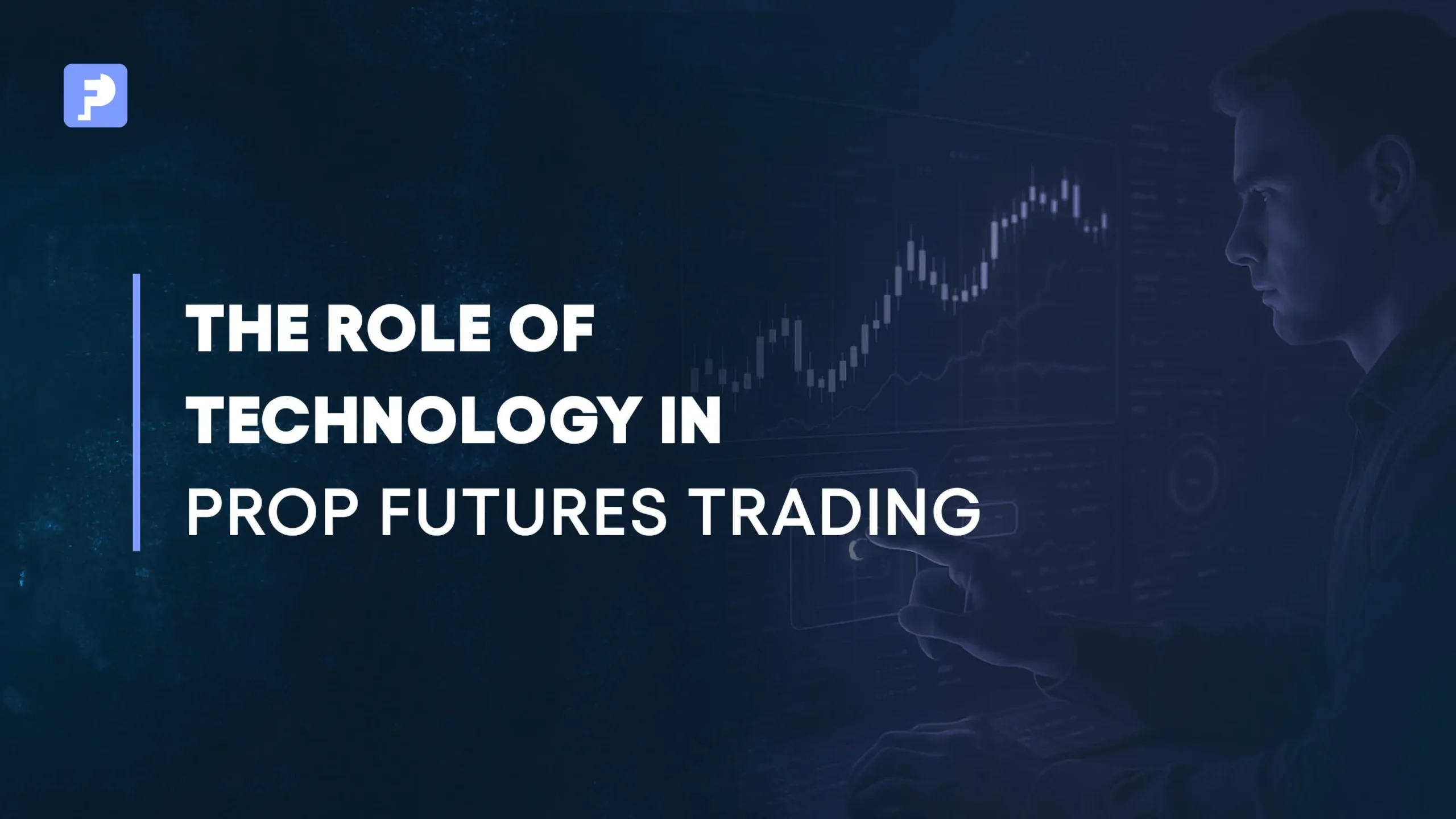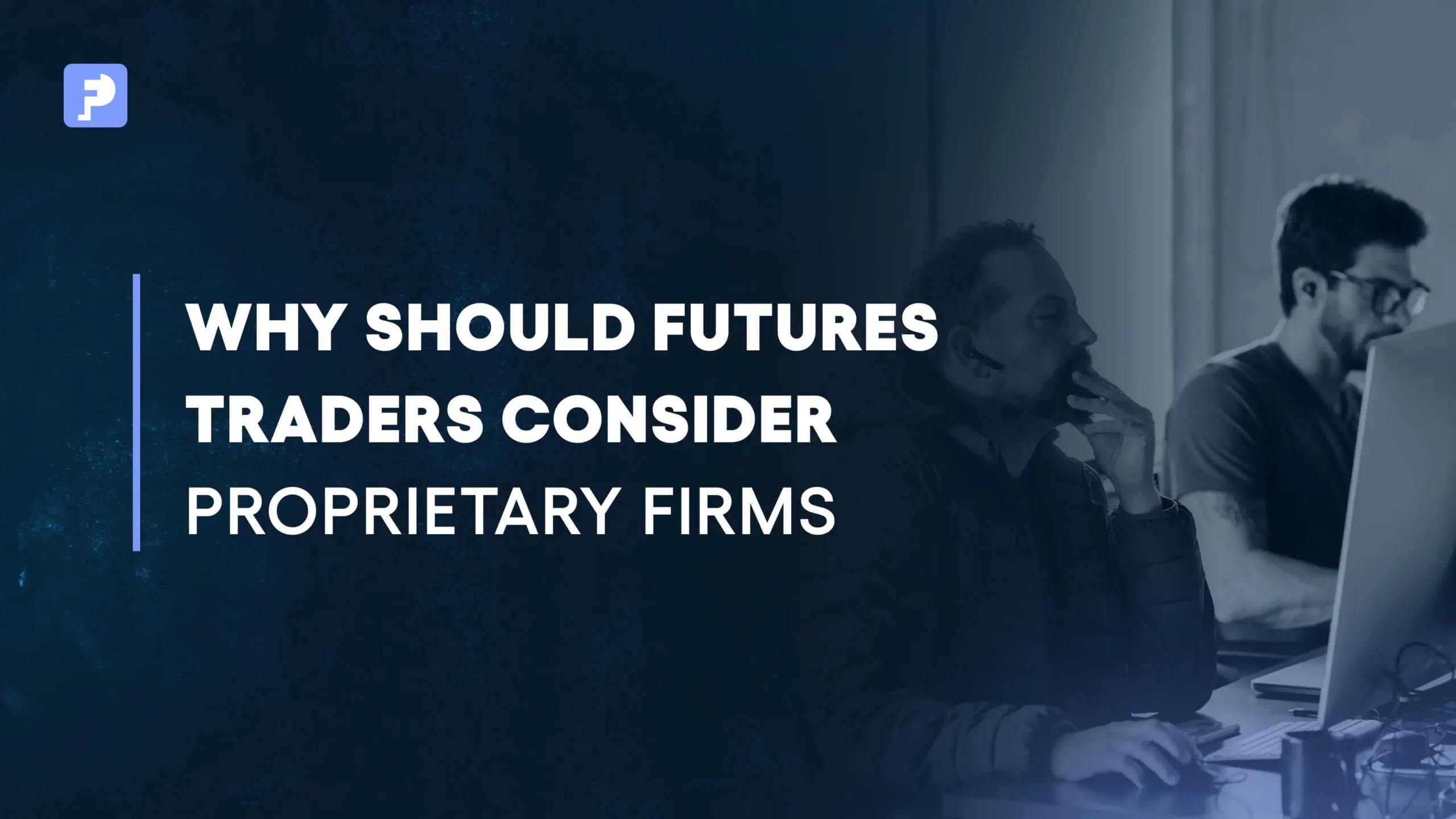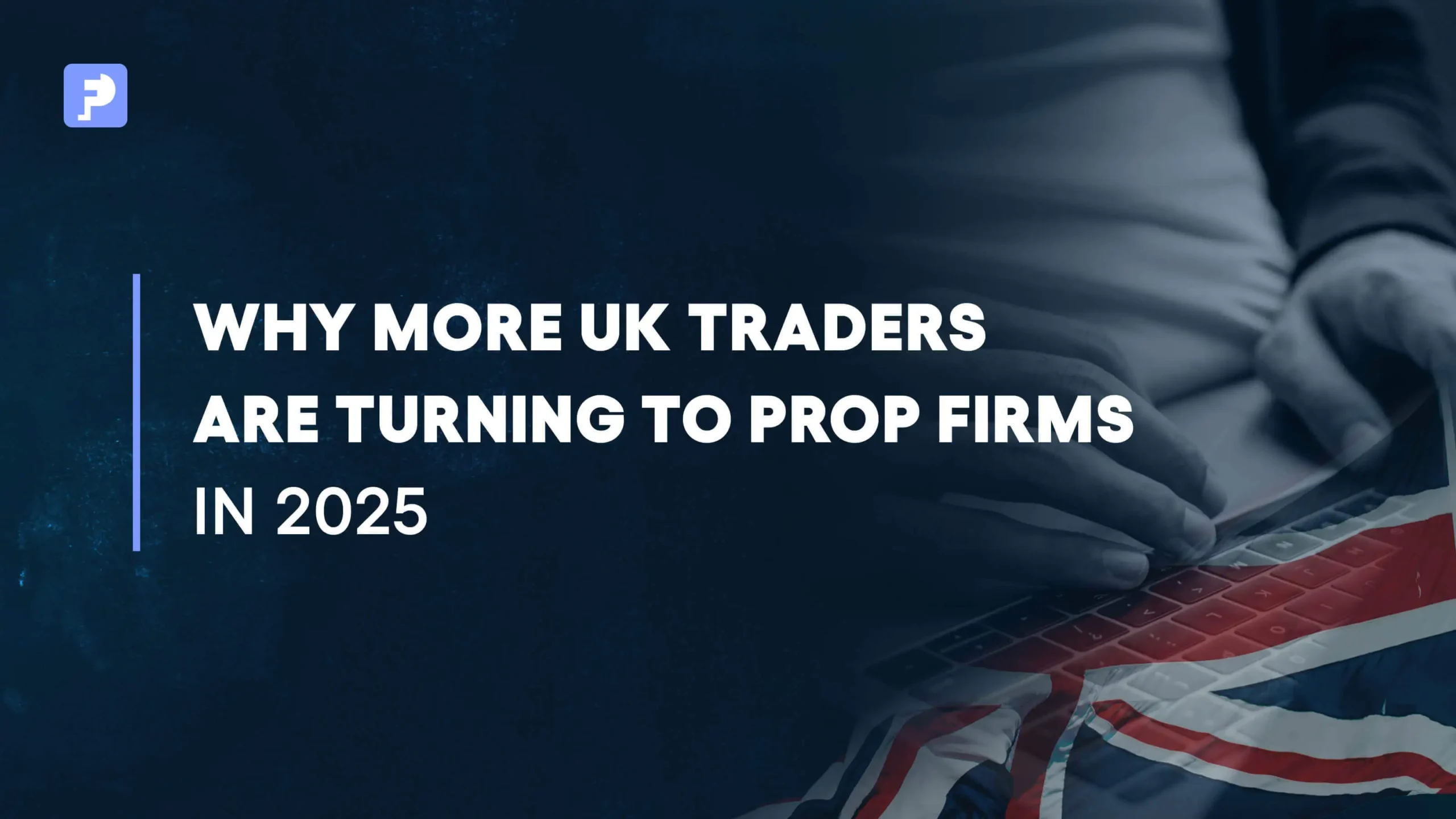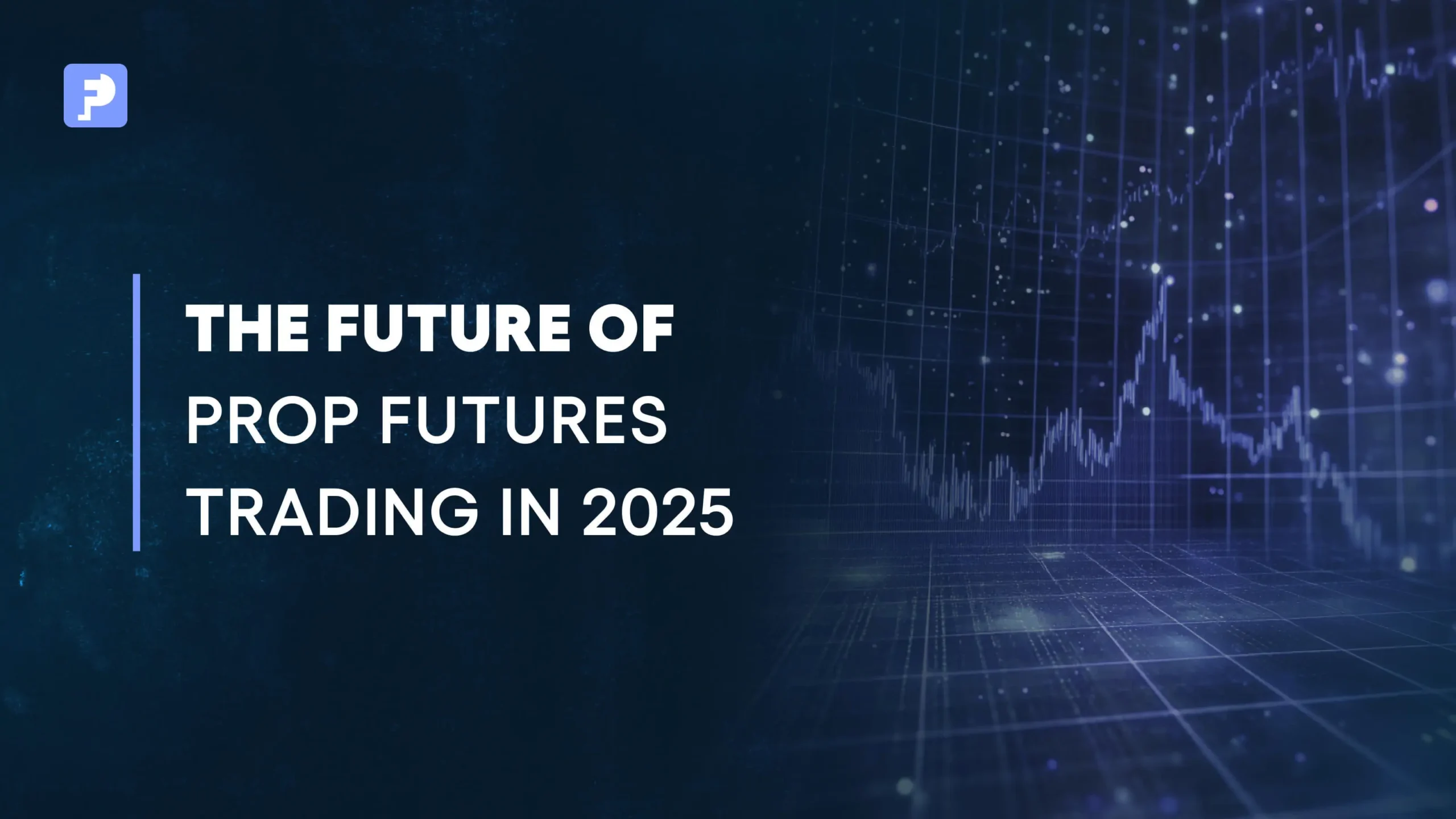
The Role of Technology in Prop Futures Trading, Platforms, Automation, and the Edge
Introduction
Technology is no longer optional in the futures prop trading space. It is foundational. The way you analyse markets, execute trades, and manage risk is shaped entirely by the tools you choose and how effectively you use them.
For traders operating inside a proprietary trading environment, technology can be the deciding factor between consistent growth and account termination. In this article, we explore how technology is transforming prop futures trading. From trading platforms and automation to real-time analytics and AI-powered decision-making, we show how the right tech stack empowers smarter, faster, and more risk-aware performance.
If you are still exploring whether prop trading is right for you, read The Benefits of Engaging in Futures Prop Trading to understand the value prop firms offer in today’s landscape.
1. Trading Platforms Built for Execution
The foundation of any trading setup is the platform. For futures traders, performance begins with speed, reliability, and access.
While legacy platforms like MetaTrader are still popular, most serious futures prop traders rely on advanced systems such as:
- TradingView – Known for its ease of use and strong charting capabilities
- NinjaTrader – Offering high-speed execution, direct market access, and custom automation
- Quantower and MultiCharts – Powerful tools for strategy testing and live order management
Your trading platform determines how quickly your orders reach the market, how deeply you can analyse price action, and how well you can execute your strategy without delay or slippage.
For a full guide to what platforms are best suited to funded traders, visit Choosing the Right Prop Trading Firm for Futures Trading.
2. Automation and Algorithmic Execution
Speed is no longer just an advantage. It is a requirement. Automated execution has changed how traders operate across global futures markets. With tools such as TradeStation, Sierra Chart, and NinjaTrader, traders can build automated scripts that:
- Enter or exit positions based on predefined setups
- Adjust stop-loss and take-profit levels in real time
- Avoid emotional decision-making during volatile sessions
Even for discretionary traders, having automation in place helps manage trade execution during news releases or high-volume periods when latency matters most.
To learn more about how automation is shaping the financial industry overall, refer to this global review from the BIS on algorithmic trading’s role in modern markets.
3. Risk Management Tools at the Core
The most important function of technology in a prop futures account is risk management. Prop firms like FunderPro Futures apply structured risk frameworks, including trailing drawdowns, daily limits, and instrument exposure caps.
Technology supports this by:
- Automatically tracking exposure in real time
- Alerting traders when they near maximum loss thresholds
- Providing dashboards for equity curve, maximum drawdown, and average trade size
Modern dashboards allow traders to visualise risk before it becomes a violation. This is critical for staying within firm rules and maintaining your funded status.
To better understand the rules around drawdowns and daily limits, read Risk Management in the Futures Prop Trading Market.
4. Data Analytics and Performance Review
Top prop traders treat performance reviews like elite athletes watching game tape. Technology makes this easier than ever. Platforms like Tradervue, Edgewonk, and Myfxbook offer:
- Trade journaling with chart snapshots
- Emotional tagging and pre-trade mindset logs
- Risk-to-reward breakdowns over time
- Strategy comparison tools
Consistent journaling allows traders to eliminate weak patterns, double down on proven setups, and improve precision under pressure.
5. Artificial Intelligence and Pattern Recognition
AI is no longer theoretical. It is being used across trading desks to detect inefficiencies, assess sentiment, and automate setup recognition. For futures traders, this might include:
- Identifying recurring volume spikes before breakouts
- Predicting short-term volatility based on macroeconomic data
- Tagging setups that match historical profit zones
While retail traders are still early in AI adoption, many prop firms are beginning to integrate AI into platform analytics. Even public tools like OpenAI Codex and Google Vertex AI can support strategy development if you know how to prompt them.
AI is a tool, not a strategy. It supports decision-making, but human oversight is still essential for adapting to market context.
6. Cloud Infrastructure and Remote Access
With the rise of global funding models, traders no longer need to sit in a New York or London office. Cloud-based platforms have enabled remote prop trading with seamless access to:
- Account performance dashboards
- Real-time price feeds and order books
- Trade journal syncing and risk logs
- Multi-device trading access, including mobile execution
This has opened up opportunities for traders across Africa, Asia, and Latin America, who can now access the same tools and liquidity as traditional institutions.
7. Cybersecurity and Data Protection
Prop firms and traders deal with large sums of money, sensitive data, and highly valuable intellectual property. That makes cybersecurity a priority.
Best practices for trading securely include:
- Using two-factor authentication on all trading accounts
- Avoiding public Wi-Fi when accessing trading platforms
- Encrypting local data or using cloud platforms with strong encryption standards
- Using dedicated VPS to run trading bots securely
8. Future Trends: What’s Coming in 2025 and Beyond
- AI-assisted decision-making: platforms will use AI to scan and score setups automatically
- Blockchain-based trading verification and audit trails
- Plug-and-play APIs for algo execution, analytics, and trade copying
- Mobile-native platforms with full-featured tools—no desktop needed
All of these innovations support one outcome: better trading at scale, with less friction.
Final Thoughts
Technology is no longer just part of the process; it is the process. For prop futures traders, the tools you use directly influence the decisions you make, the risk you carry, and the results you deliver.
Whether you are just getting started or scaling a six-figure funded account, make time to audit your tech stack. Ask:
- Does my platform support my strategy?
- Am I using tools that manage risk in real time?
- Do I have systems for journaling, review, and execution consistency?
In the world of funded trading, edge is not just about ideas; it is about infrastructure.
If you are ready to trade futures professionally, your first investment should be in the technology that helps you protect capital, execute faster, and learn from every session.



